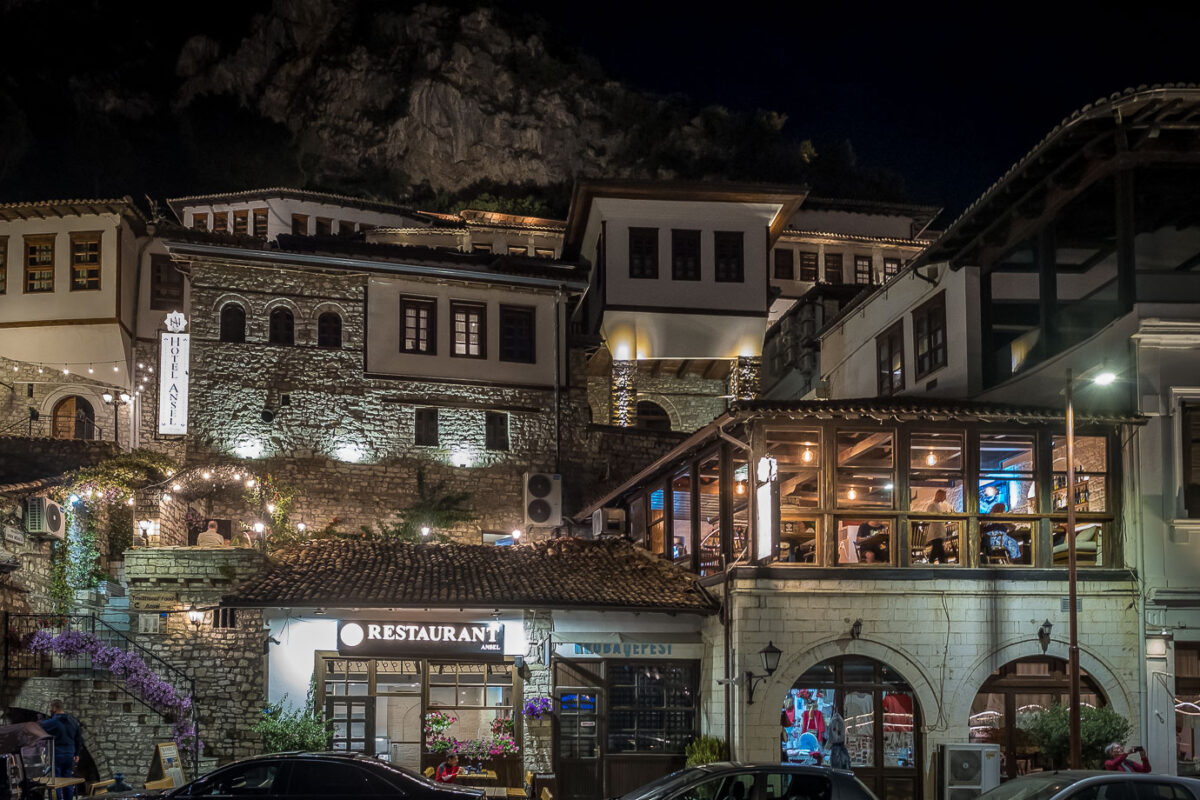Albania is a small country on the south east coast of the Balkans. It’s not part of the EU and let’s be honest, most people’s image of it is not too flattering. A poor, undeveloped place ran by the Albanian Mafia. Most people are peasants or criminals involved in Europe’s biggest outdoor weed operation.
Well, sorry to burst your bubble, but Albania is actually way more developed than I thought and is on the verge of blowing up internationally and becoming the next Croatia or Montenegro. Here are some common myths about Albania:
Myth no.1 – Albania is not safe
We all know of the criminal gangs causing havoc all over Europe, blowing up bombs in Sweden and now allegedly controlling the cocaine traffic routes from Latin America. So, Albania must just be full of cut-throat murderers and drugs dealers, right? Sorry to burst your bubble. Albania is very safe and the people there are very kind. You are more likely to be overwhelmed with hospitality than overrun by criminal gangs.
Aside: the Albanian Mafia is in fact a myth. A Mafia implies a structure with a head of the family or cartel and a heirachy. Albanians have no such structure. They are a more loose set up of criminal gangs. They have just become very good at running criminial activities, so much so that they now export their talents all over the world!
Myth no.2 – Albania is Third World
Albania is a really poor third world country with very basic infrastructure – it’s normal to find holes in the streets with exposed drains or big potholes on the roads. The old ex-soviet style architecture is falling to bits and everything looks out the 1970s. Sorry to burst your bubble. Albania is quite advanced and modern.
In Tirana, there is no old town. They are building huge multipurpous skyscrapers everywhere. There are modern cafes and bars patronised by the SUV driving Tiranian elite. There are nice new highways. The coastal resort towns of the “Albanian Riviera” are very developed and touristy.
Albania is making a real attempt to modernise itself in a bid for eventual EU membership.
Myth no. 3 – Albania is corrupt
The whole of the country from top to bottom is corrupt. This severely discourages foreign investment and holds the development of the country back. Ok, this one is not a myth. It’s true.
Albania is a small country and you can see the whole country in 2 weeks. I had 10 days. That was enough to cover Tirana, the capital, Berat, Girokaster and Saranda on the Albanian Riviera. I opted not to return to Tirana, but instead to take the ferry to Corfu and fly back from there.
Top Travel tips for Albania
- Don’t go in summer. It’s totally packed and expensive. And it’s too hot. The best times to visit are, like everywhere in Europe, is spring and autumn. I was there in May and it was already quite lively on the coast
- Bring tons of Euros in cash. Getting cash in Albania is a major pain in the arse and very expensive. Very few places outside the capital take credit cards and even those that do rarely have a machine that works. So that means cash only. You will have to pay for your accommodation in cash too, unless at some fancy hotel. Most places take Euros, so bring plenty because the Albanian bank’s ATMs charge the most outrageous fees I have ever experienced anywhere! You have to pay a hefty fee just for the use of the machine. Then, almost all banks charge a “foreign exchange” fee ranging from 6 to 15%. No, you’re not reading this wrongly. I went to get out 500 € worth of the local currency, the Lek, and they wanted to charge me 558 €!! I didn’t bother to bring enough Euros and got caught out badly a few times – I had to walk all round town trying to find a bank which didn’t charge the foreign exchange commission. Even then with the withdrawal fee alone, it still cost a fortune.
- Rent a car or take taxis. The buses suck and driving in Albania is much easier than what you read in travel blogs/guides. You can hire a taxi to drive you around for very reasonable prices. Renting is a little expensive compared to Western Europe. The roads are mainly good. The driving is nowhere near as bad as what people make it out to be. Nothing unusual for this part of the world. So, no, you don’t need to be an advanced driver as stated in many blogs. Buses, on the other hand, are a real pain in the arse – ok, they are super cheap, but think about the opportunity cost. The money you save you will easily pay back with the time you waste hanging about in shitty bus stations. The timetables change all the time and are not reliable. The services are sporadic and the buses suck – old, with no toilets or air con. Just not worth it at all. I decided to travel by bus rather than renting because of the extortionate one way hire charge for Tirana to Saranda. It was never my plan, but each time I ended up taking a taxi instead to save hours of time and my sanity. It works out very cheaply if you can find some other travellers to share the ride with you. If not, then just pick up locals and let me ride with you. They will be happy and the driver will pick up a bit of extra change.
- Albanians don’t eat breakfast. Albanians just love coffee and tobacco. This is their breakfast. I stayed in the middle of Tirana surrounded by posh cafes and found it really hard to find a place for breakfast. There is a kind of traditional breakfast they serve up in hostels and guest houses – eggs, cheese, vegetables and some fried bread with jam. But I think this is more for the tourists. Real Albanians just drink coffee and smoke cigarettes for breakfast. Tirana is full of cafe/bars, which don’t serve any food at all. In the morning, people drink coffee and in the evening alcohol or coffee. Even the dodgiest looking dive bar or shitty cafe will have a proper Italian espresso machine. No crappy filter coffee here.
Tirana
I flew into Tirana and it was not at all what I expected. I was expecting this kind of run down, soviet era vibe but I was surprised to find out the city to be quite modern and vibrant. I stayed in this central neighbourhood, called Blloku. It’s the posh neighbourhood, with modern cafes and SUVs. The Albanian elite seem to prefer Range Rover and Audi, but I also spotted a bright green Lamborghini SUV. This neighbourhood used to be exclusively for the communist party elite who ruled under their ruthless dictator, Enver Hoxha.
I would not spend more than a couple of days in Tirana. There is not that much in the way of sights. I did a walking tour of the center – street art and architecture. The guide tried to make it as interesting as he could, but let’s be honest, there is not that much interesting to see or do here. There is a big square with a statue of the Albanian national hero, Skanderbeg. Skanderbeg lead a rebellion against the Ottoman empire in the 15th century. Other sites are this bizarre white pyramid, which was originally a museum dedicated to the communist dictator, Enver Hoxha, a brutal and paranoid isolationist. Hoxha ruled with an iron fist for 40 years and was so paranoid that he built thousands of bunkers all over the country in case of foreign invasion. Today, the pyramid serves as a center for educating youngsters in IT. But it is still kitsch and just plain wierd.
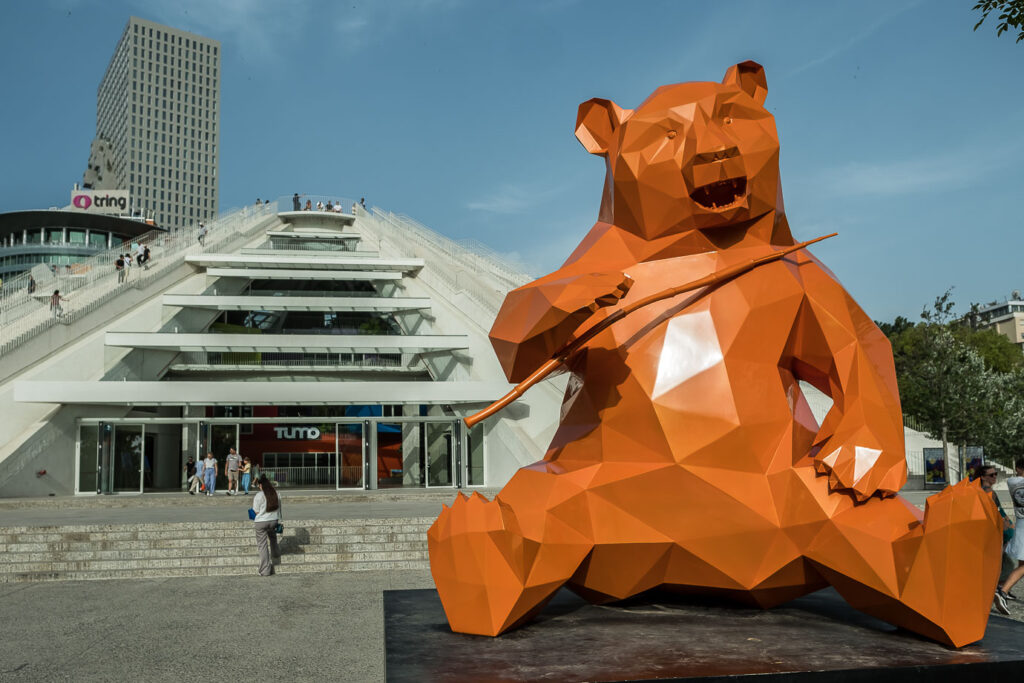
Kruje
One of the main attractions of Tirana is a cable car affording great views of the city. Unfortunately it is closed on Tuesdays, the day I decided to go. So, instead I made a day trip to Kruje, a small mountain village north of Tirana. I took a taxi there and the bus back. The traffic both ways was a nightmare. But it was worth it. There are spectacular views and some restaurants, serving local dishes. There is also a nice small castle, now converted into a museum honouring the national hero Skanderberg. Skanderberg made his last stand here against the Ottomans.
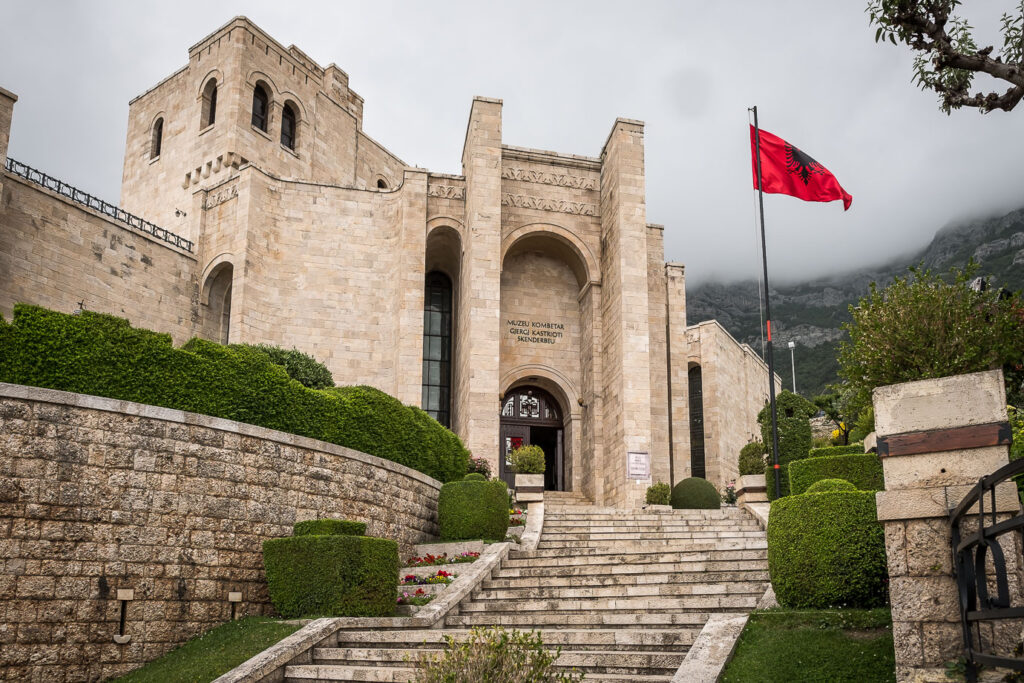
Berat
From Tirana, I travelled south inland to the small town of Berat. Berat has some unique Ottoman architecture and is known as the “city of a thousand windows”. There is not a great deal to do except walk up to the castle and admire the views and enjoy the local cuisine. It is a UNESCO World Heritage site. I wouldn’t spend more than a couple of days there.
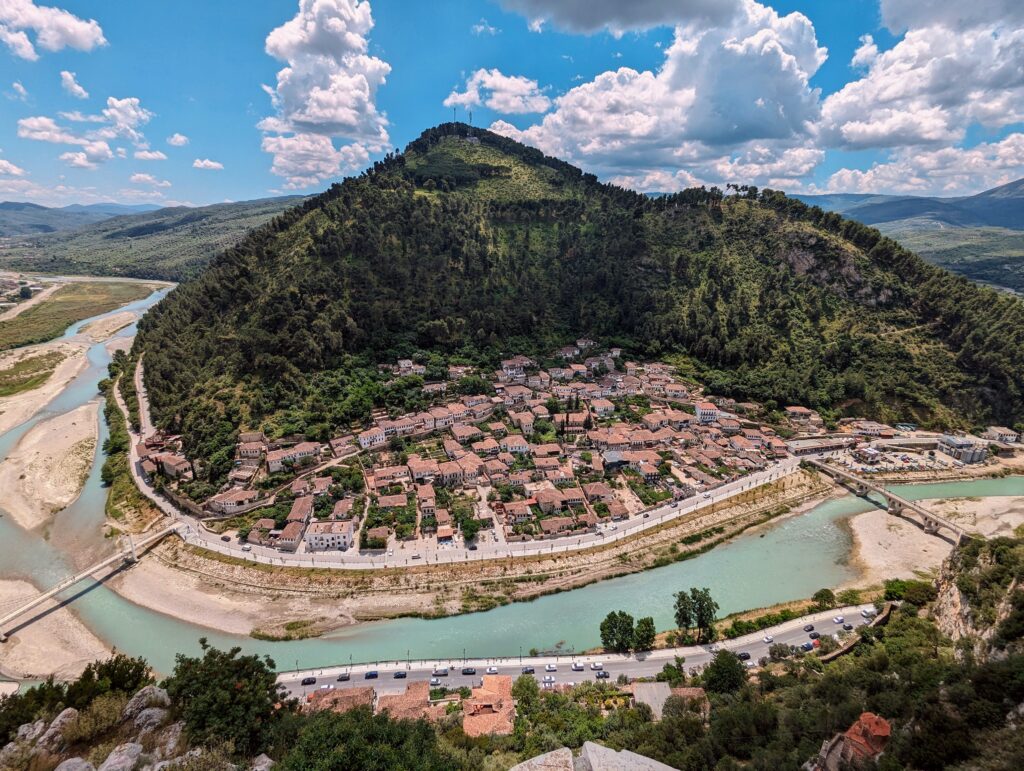
Gjirokaster
Another UNESCO World Heritage site, Gjirokaster has an old town on a hill. The houses are made of stone. There is a castle and a nice market area. You can go hiking above the town and enjoy spectacular views of the mountains and valley. One day is enough.
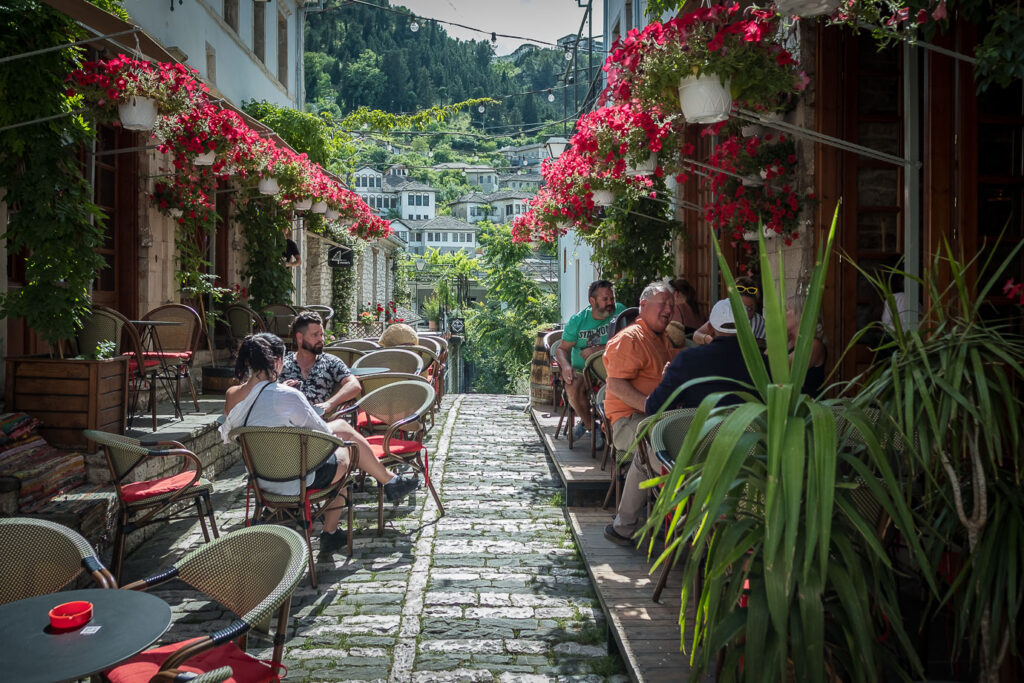
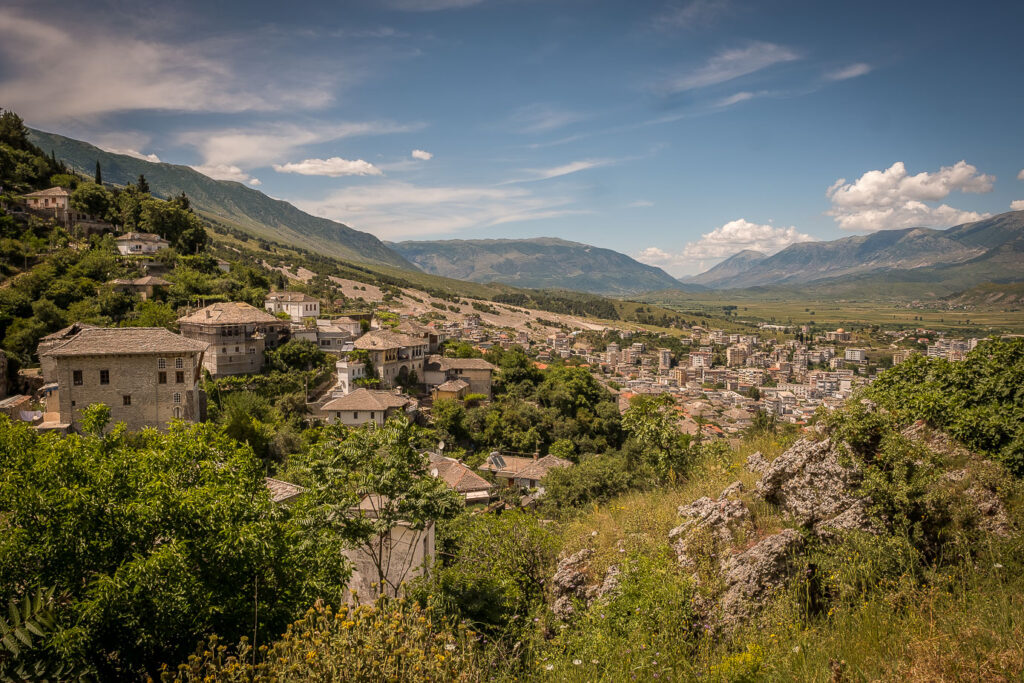
Sarande and the Albanian Riviera
Sarande is the main city on the south coast of Albania. It is near the Greek border and you can take a ferry to Corfu, which takes about an hour. This is what I did and flew home from Greece rather than have to travel all the way back to Tirana. Note, that Greece is quite a bit more expensive than Albania, especially Corfu.
Don’t expect any kind of idyllic seaside town. Sarande is a very developed, busy and noisy place. Don’t come here for peace and quiet. There is one public beach. Otherwise, there all other beachfront areas are privately owned by hotels and restaurants. Prices are still cheap compared with other destinations like Greece or Croatia, but still more expensive than in the rest of Albania. I was there in May and the annual fish festival had just started with food and music. It was already quite lively along the promenade in the evening, so I would hate to think how crowded it gets in peak season.
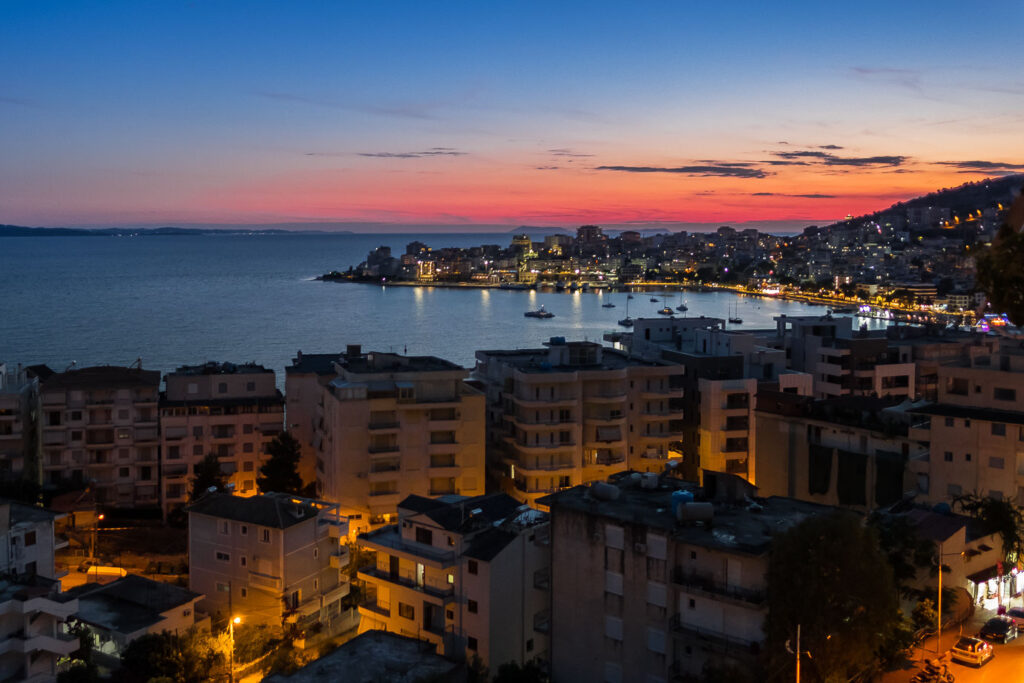
The Blue Eye
The Blue Eye is a natural spring with beautiful clear turquoise water. It’s nice enough, but a bit of a tourist trap. It’s best to go there on the way from Gjirokaster to Sarande, assuming you have your own transport. I had to hire a car from Sarande. This is because there are only 2 public buses (in May) which travel along the old road from Gjirokaster to Sarande.
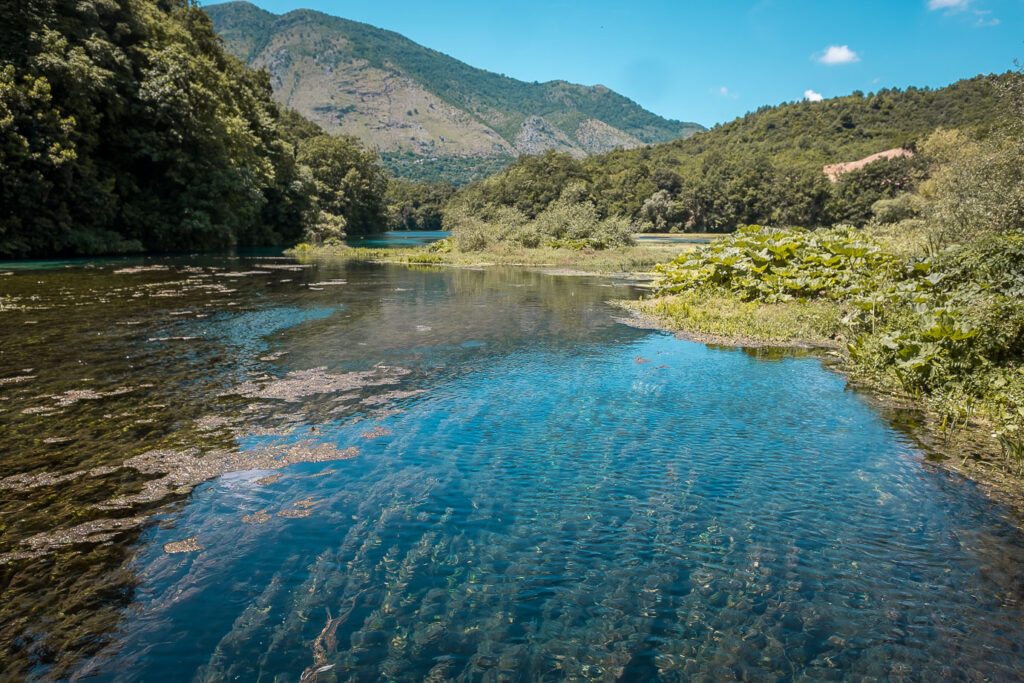
Ksamil and the Butrint National Park
Further south from Sarande is to the “Jewel of the Albanian Riveria” Ksamil and neighbouring Butrint National Park, which can be done in a day trip from Sarande. Ksamil is a beautiful village with a series of small bays and beaches. There are islands which you can swim or even walk to. That is, if you can afford to pay for a lounge chair and umbrella, which go for up to 20 € in the high season. This is because there is no public beach. Every single piece of beach is privately owned. Too bad for the poor locals who are not allowed to enjoy their own countryside. Many of the beachfront restaurants had horrible music blaring out and I can imagine it turns into a horror show during high season.
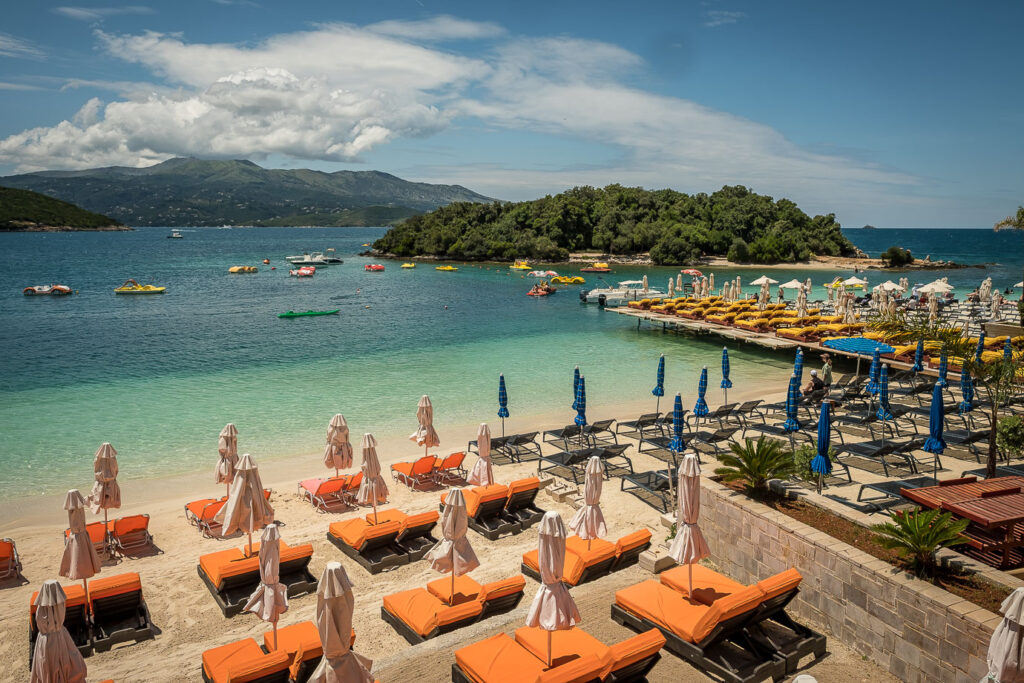
The Butrint National Park is a small park with some old Roman ruins to explore. It is quite idyllic and would be a perfect place to relax if it were not for the hordes of Italian schoolchildren running around screaming.
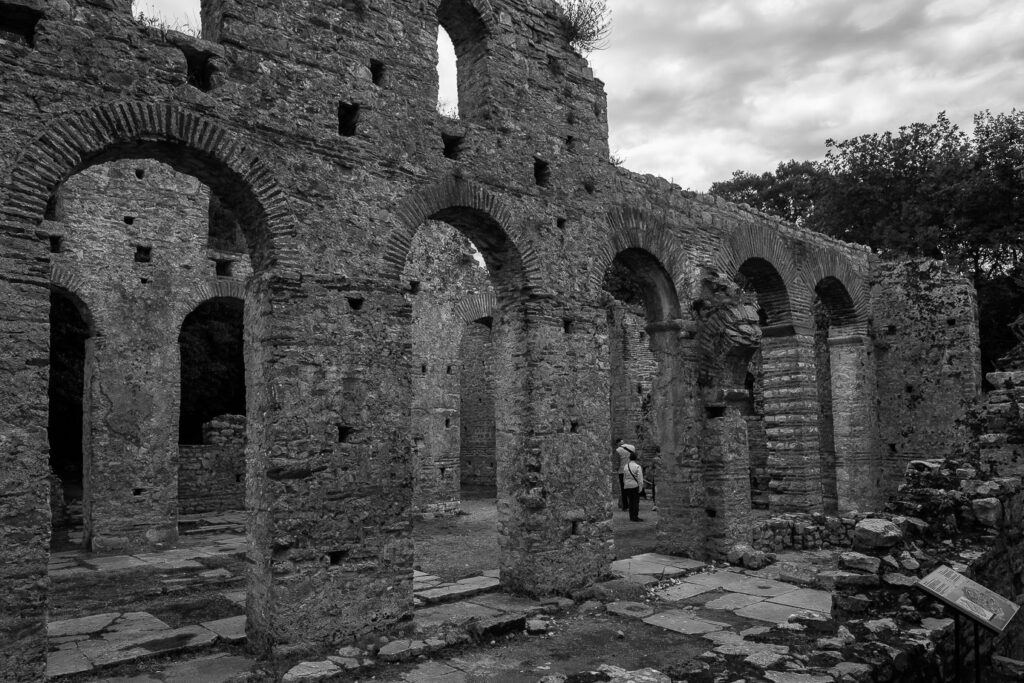
Conclusion
Albania is no longer a best-kept secret and will be the next big thing. So, now is the time to visit before it gets overrun like Croatia and Montenegro.
